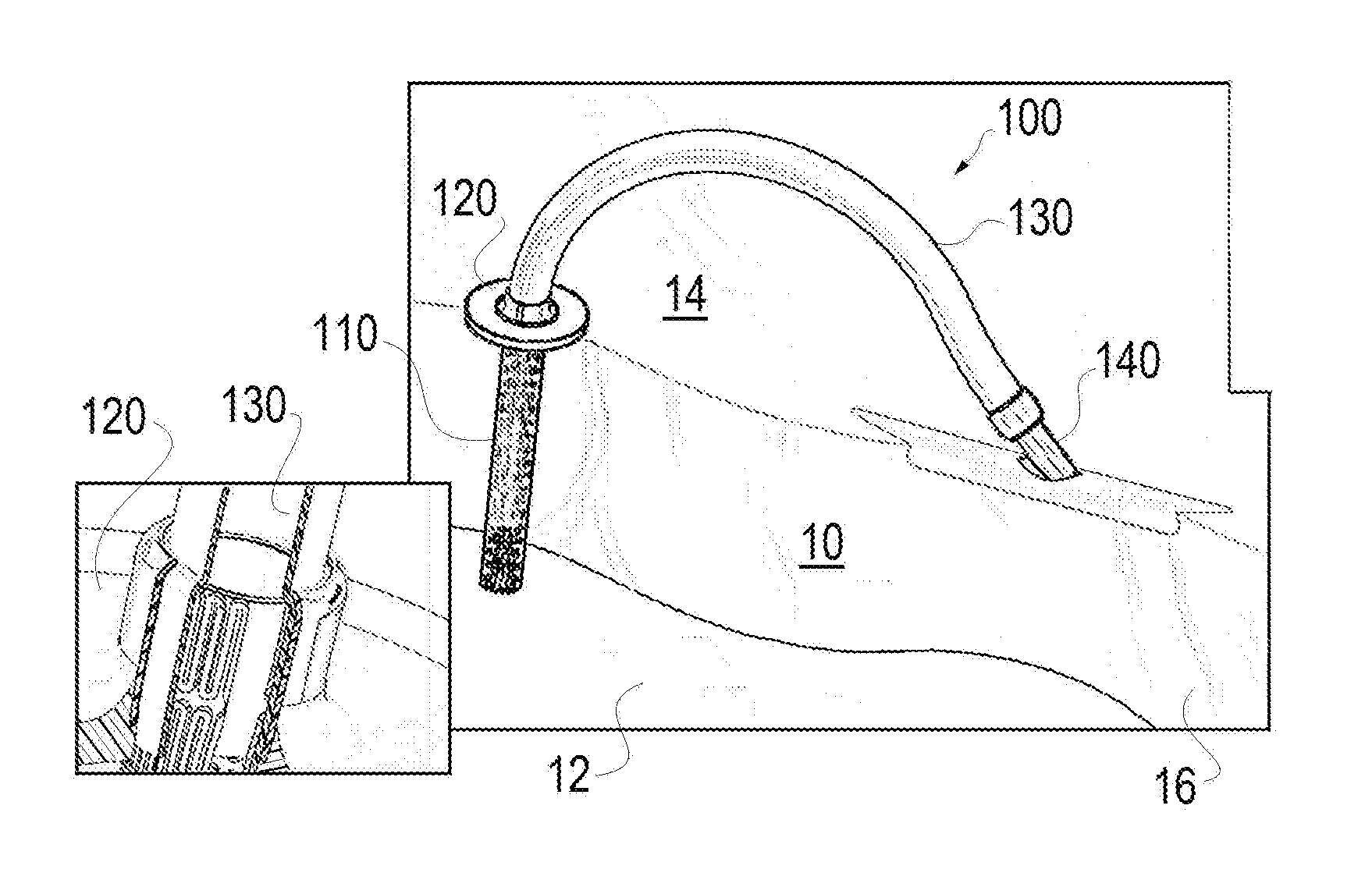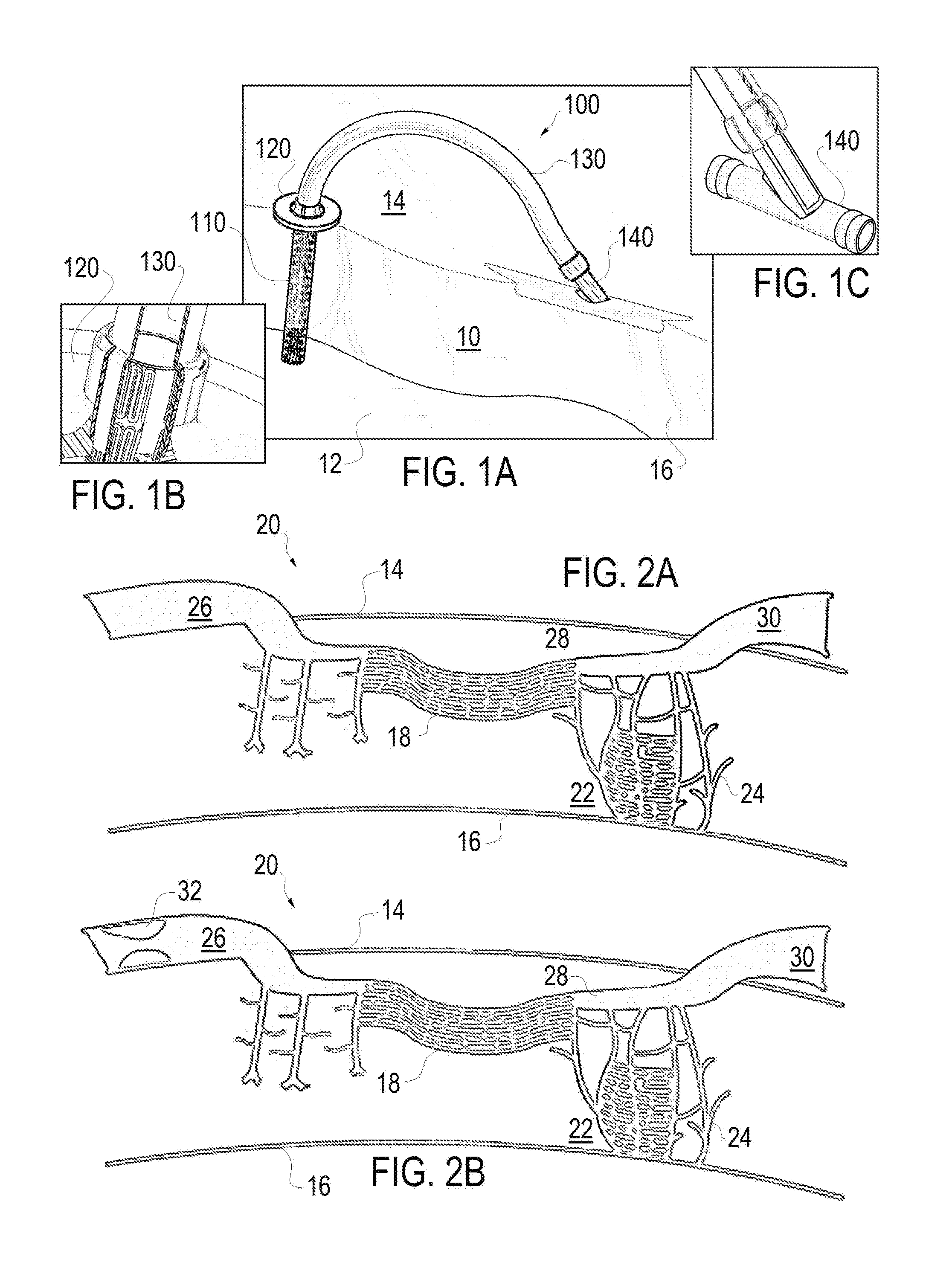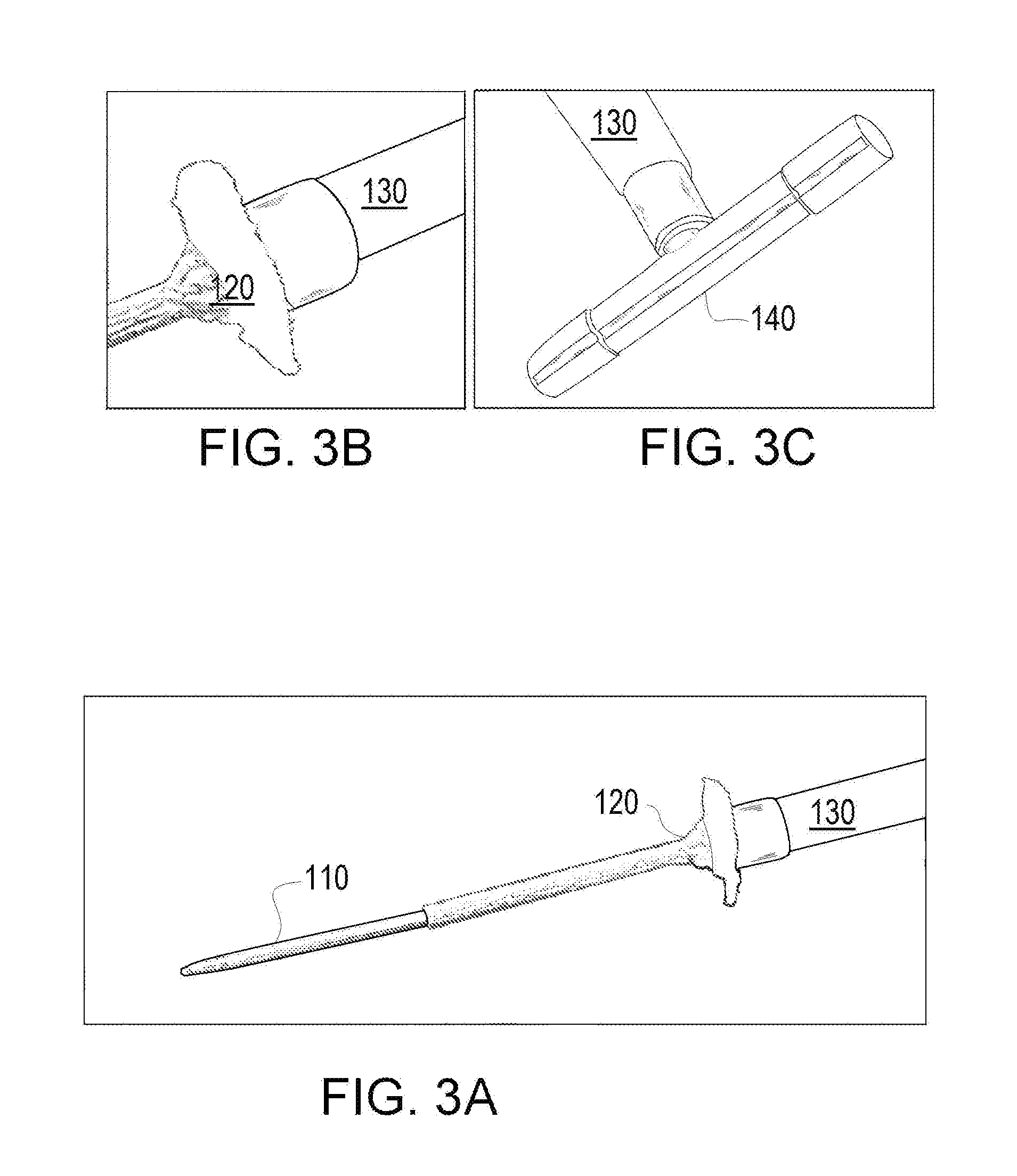Method and apparatus for coupling left ventricle of the heart to the anterior interventricular vein to stimulate collateral development in ischemic regions
a technology of left ventricle and anterior interventricular vein, which is applied in the field of stimulation of collateral development in ischemic cardiac regions, can solve the problems of affecting the survival rate of patients, and affecting the ability of patients to recover, so as to avoid damage to the venous vasculature
- Summary
- Abstract
- Description
- Claims
- Application Information
AI Technical Summary
Benefits of technology
Problems solved by technology
Method used
Image
Examples
Embodiment Construction
[0029]It has been stated that if the coronary venous system consists of only epicardial drainage into the coronary sinus (i.e., single arterial inlet and single venous outlet), then retroperfusion will result in stagnation of flow and an increase in venous pressure to arterial levels. Coronary retroperfusion is possible, however, because the coronary venous anatomy extends beyond the coronary sinus 30. There exist many endo-thebesian vessels 24 with communications or interconnections within each system and in between the two systems FIG. 2A schematically illustrates the normal physiology of coronary circulation of the cardiac region of interest, while FIG. 2B is a schematic view of the physiology of coronary circulation of the cardiac region of interest yielding ischemic cardiac regions. The myocardium 10, generally defined as the middle and thickest layer of the heart wall, composed of cardiac muscle, represents the heart structure around the left ventricle 12 with the myocardium h...
PUM
 Login to View More
Login to View More Abstract
Description
Claims
Application Information
 Login to View More
Login to View More - R&D
- Intellectual Property
- Life Sciences
- Materials
- Tech Scout
- Unparalleled Data Quality
- Higher Quality Content
- 60% Fewer Hallucinations
Browse by: Latest US Patents, China's latest patents, Technical Efficacy Thesaurus, Application Domain, Technology Topic, Popular Technical Reports.
© 2025 PatSnap. All rights reserved.Legal|Privacy policy|Modern Slavery Act Transparency Statement|Sitemap|About US| Contact US: help@patsnap.com



